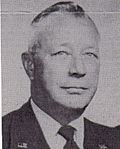German immigration to Puerto Rico began in the early part of the 19th century and continued to increase when German businessmen immigrated and established themselves with their families on the island.
Contents
- Early German immigration
- Situation in 19th century Europe
- Economic situation
- Political situation
- Spanish Royal Decree of Graces
- Religious influence
- German cuisine
- Influence on the economy
- 20th century
- German influence in Puerto Rican and popular culture
- German Consular Presence in Puerto Rico
- Surnames of the first German families in Puerto Rico
- See also
- References
- External links
However, it was the economic and political situation in Europe during the early 19th century plus the fact that the Spanish Crown re-issued the Royal Decree of Graces (Real Cédula de Gracias) which now allowed Europeans who were not of Spanish origin to immigrate to the island that contributed the most to the immigration of hundreds of German families to Puerto Rico in search of a better life.
Puerto Rico was ceded by Spain to the United States under the terms of the 1898 Treaty of Paris, which ended the Spanish–American War, and the U.S. established military bases there.
Many soldiers of German-American background stationed in the island upon encountering Puerto Ricans of German ancestry quickly made social contact with them. Not surprisingly, many of them stayed on the island and married into local families that had been established for decades since their own arrival from Germany.
With the passage of the Jones Act of 1917 Puerto Ricans could be conscripted to serve in the Armed Forces of the United States. As a result, Puerto Ricans fought in Germany during World War II and have served in U.S. military installations in said country since then.
Many of these soldiers married German women who eventually moved to the island with their families. Puerto Ricans of German descent have distinguished themselves in different fields, among them the fields of science, business and the military.












